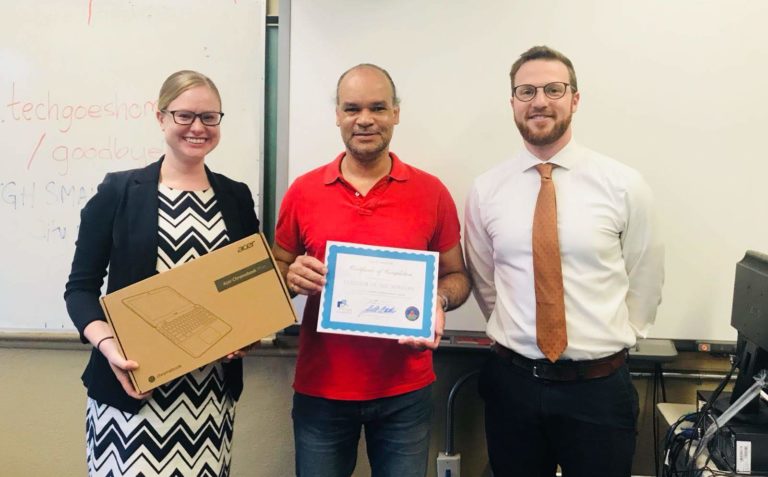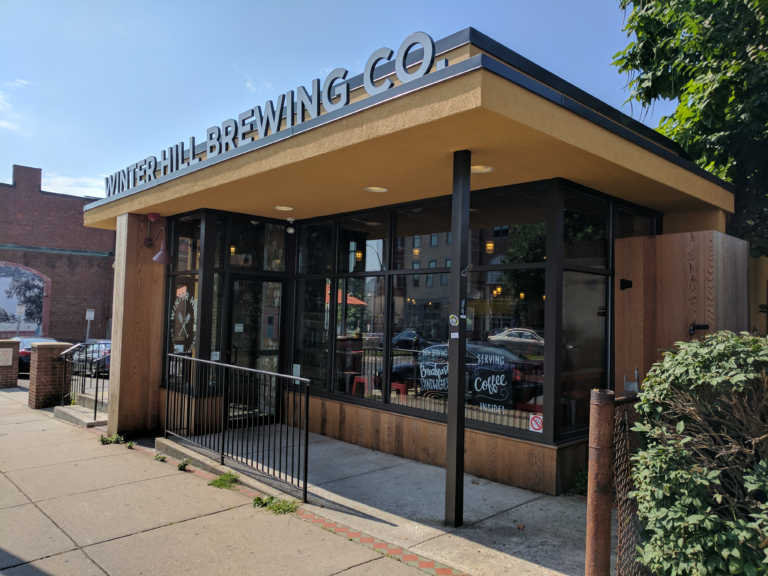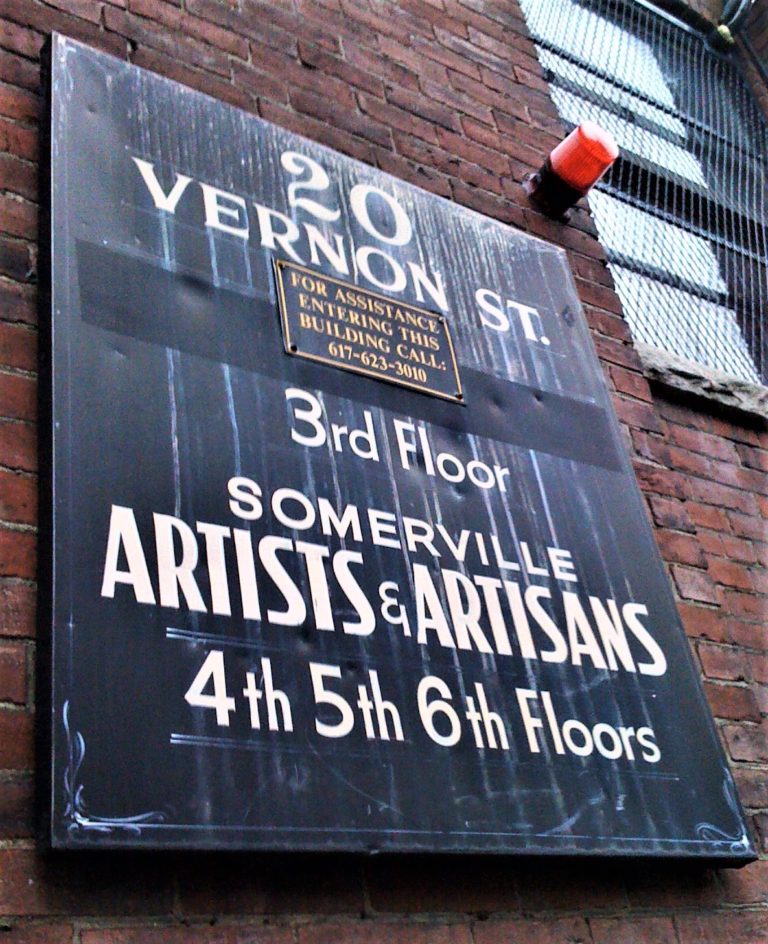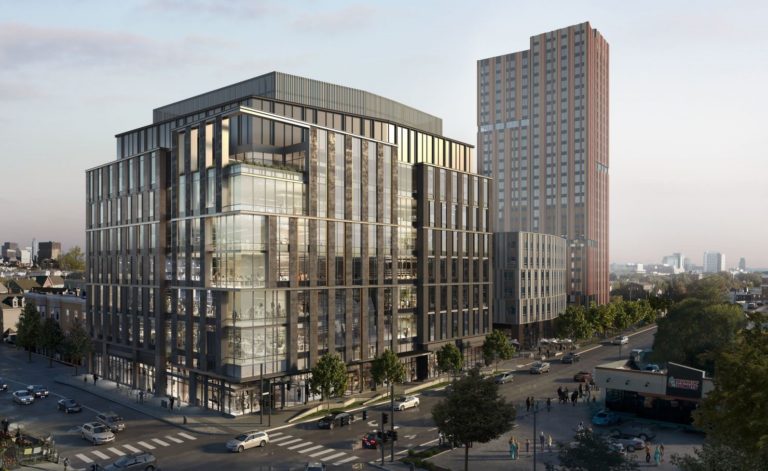/
SomerVision Number
by 2040
The scope of the Commercial Development, Business, and the Arts topic chapter is: commercial development, main streets and squares, job quality, the economy, support for businesses, workforce development, job creation, commercial tax revenue, artists, creative economy.
Commercial development plays an important role in the future of Somerville as it provides revenue to support City services, brings jobs to residents that can reduce commutes, and provides a larger daytime population for existing retail and service businesses. Currently, only 17% of the city’s property tax is commercial, and only 15% of the city’s working residents work in Somerville. However, additional development to increase these ratios will require policies that optimize the city’s strengths and effectively manage its challenges.
STRENGTHS
Somerville’s workforce is one of its major strengths. One of the most important location criteria for new-economy employers is to be where the talent is. Somerville has the second-highest proportion of residents with advanced degrees among the Commonwealth’s 351 municipalities. With its wealth of artistic, musical, and culinary amenities, the city has been a magnet for millennial workers and students who provide a ready workforce for business expansion.
Somerville has emerged as a leader among cities of its size in mobilizing community, industry, and government partners to analyze and further develop this impressive workforce. The recently published Somerville Talent Equity Playbook articulates a coordinated strategy for preparing its residents for the jobs of today and tomorrow. Investment in the new Somerville High School promises to bring state-of-the-art facilities to support its lauded Career and Technical Education program. Jobs linkage – an impact fee paid by commercial developments – provides resources to fund impactful programs to prepare residents for new jobs. In addition, Somerville’s close proximity to the region’s preeminent commercial centers, research and educational institutions, and capital sources provide further incentive for workers to locate in the region as well as a proximity advantage to businesses who locate within the city. Somerville’s transit access through the Red Line, Orange Line, and the Green Line Extension reinforces this advantage. Somerville’s renaissance over the last generation has been sparked by artists, musicians, students, and other creative types transforming abandoned factories into vital centers for innovation, ideas, and weirdness. Artistic initiatives like Open Studios, Art Beat, the Nibble Kitchen, and Honk! Fest help promote and preserve this spirit of creation that has become the cornerstone of Somerville’s emerging economy. This helps to build Somerville’s national reputation as a city of innovation – another strength of our community. Wise management of the City’s commercial development will protect and extend these creative, innovative, and entrepreneurial forces.These strengths have facilitated an ecosystem of assets that provide additional incentive for businesses and artists to work in Somerville. For example, Somerville boasts the largest cleantech incubator in North America, Greentown Labs; New England’s oldest and largest makerspace, Artisan’s Asylum; and a variety of other artist studios, entrepreneurial startups, and creative initiatives. This spirit is contagious and creates a competitive advantage in a world that increasingly values new ideas and creative problem-solving.With these kinds of strengths, Somerville is poised for strong initiatives around commercial development, business growth, and further support of the arts.
OPPORTUNITIES & CHALLENGES
Commercial development provides opportunities to improve our community. By creating new tax revenue, commercial development can shift tax burden away from homeowners. Shifting this revenue would allow the City to provide high-quality services while keeping residential tax rates low.
Another opportunity commercial development offers is to increase the number of jobs in the community. Commercial development would increase the chance that more residents work in the city in which they live. This could reduce vehicle trips, strengthen community, and improve family life by reducing commute times. More commercial development would also produce a daytime population sufficient enough to support existing and new small businesses.To take advantage of the opportunities commercial development brings, a number of challenges must be overcome. Uncertainty is one obstacle that has always existed; historically, this was the concern that Somerville was not a desirable enough location to sustain commercial uses. Today, Somerville is increasingly attractive to biotech and digital technology employers, but some commercial developers remain skeptical. This can be due to the unpredictability of zoning requirements, fee structures, approval processes, environmental contamination, and community-benefit obligations. However, the advantages of Somerville may continue to outweigh these uncertainties. Somerville’s increasing desirability as a place to live and work is creating new challenges for those who wish to promote commercial development. As discussed in the Housing chapter, housing costs are rising, resulting in the displacement of many residents and a shortage of available housing stock. This causes problems for large employers looking to attract talent as well as small retail and restaurant businesses who are facing increasing challenges finding staff. Rising commercial rents are also affecting our small businesses that contribute to the very soul of Somerville neighborhoods. Smart policymaking can mitigate the role commercial development plays in these rising costs and protect the existing squares and main streets that are an important part of the Somerville community.Another challenge is preserving the artistic community in the City. Rising costs and affordability are the biggest challenges artists cite in continuing to work in Somerville and have resulted in the displacement of some artistic nstitutions already. Although there are many art events throughout the year, there are fewer permanent spaces to allow artists to display and sell their work year-round, in part because of the expense of space. The fabrication district has started to address this issue in zoning but it’s not a panacea. Somerville businesses are also dependent on larger social, economic, and consumer dynamics. Minority-owned and immigrant-owned businesses face particular obstacles in securing necessary startup capital and may require additional support to overcome these barriers. Changes in shopping behavior mean that retailers and other small businesses need to be more creative in how they attract and retain customers, but they are still typically working within more traditional permitting and licensing structures. Commercial development in some ways is a keystone. It provides direct benefits but also creates revenue that could be applied toward designated social programs to bolster community objectives like housing, workforce development programs, open space, and small business support. It could create a market for and produce sufficient municipal surplus to support the creative economy.
-

- The City’s technical assistance programs provide a variety of support for small businesses in Somerville. Historically, this program focused on providing grants to help improve storefronts, like for Winter Hill Brewery. Today, the Small Business Support program provides a combination of free one-on-one expert coaching for business owners and grants for improvements, and can benefit not only storefront businesses but home-based entrepreneurs as well.
GOALS AND TAKEAWAYS
Add jobs. Prioritize commercial development until the number of jobs in Somerville is equal to the number of working residents. This will build a fiscally healthier and more vibrant community. In Boston and Cambridge, the ratio of jobs to working residents is, respectively, 1.6 and 1.8. Currently the Somerville ratio is 0.5.Encourage more commercial development. Develop sufficient commercial property to generate 50% of property tax revenue from commercial sources.Continue to support small businesses. Work to create an environment that enables existing small businesses to thrive and produce entrepreneurial opportunities for new ones. Ensure that the regulatory environment supports the innovative business models necessary for businesses to adapt.Promote sustainability in commercial development. Ensure that commercial development uses sustainable design, technology, and practices.Promote Somerville as a forward-thinking place to do business. Enhance Somerville’s reputation as a center for technological and environmental innovation.Support and protect artists. With rising costs, special effort is needed to preserve and extend Somerville’s status as a home for artists and musicians.
EQUITY GOALS
- Focus business support on minority-owned businesses. Minority- and immigrant-owned businesses face particular challenges, and business support services should reflect this
- Find ways for commercial development to support small businesses. Explore how to leverage new development to provide additional benefits including small retail spaces or more affordable space for new and existing independent, local businesses.
- Help promote accessibility and universal design in businesses. Explore how to provide technical and financial assistance to existing businesses to help them be more accessible, and encourage universal design in future commercial development.
POTENTIAL TASKS
- Zone commercial corridors that are in easy walking distance of existing and planned subway stops as commercial only.
- Master plan and then update zoning in the “Transform” areas as office and R&D districts (taking in consideration the Minimum Mixed-Use Ratio study), with supporting residential, retail, hotel, open-space, and public uses.
- Zone and develop Boynton Yards as a biotech cluster and ecodistrict.
- Develop programs that prepare residents especially youth and displaced workers for the needs of employers located in the city, in cooperation with the Center for Career and Technical Education, community colleges, and labor unions.
- Create a public/private team of Somerville stakeholders that promotes the city as a tech center and recruits desirable commercial tenants. Emphasize businesses that create a range of jobs with upwardly mobile career paths.• Create incentives and requirements for commercial developments to maximize sustainability.
- Adopt zoning that favors independent and locally-owned small businesses.
- Create a requirement that development has a percentage related to the arts. For example, some cities require 1% of a major development’s costs be used for murals or local artist projects.
- Work on zoning amendments to support the goals of this chapter and ensure the availability of land best suited to accommodate commercial development.
- Provide a city program for immigrant entrepreneurs to help them to establish small businesses.
- Explore incentives for commercial building owners to preserve existing studio spaces for artists.
- Continue to promote and invest in “shop local,” “main street,” and our “loyal to local,” programs to support small businesses and any organizations which do the same.
- Establish a system of developer requirements, balanced with incentives, to support local artists, prevent displacement of unique small businesses, and promote minority entrepreneurship.
- Host workshops or other programming to support artists with the business side of their work.
- Develop and implement a system of “innovation zoning” that ensures available space to enterprises throughout their life cycles, from start-up to maturity.
- Reuse at least one municipal building for support of the local arts and artists.
- Create a program to help connect local artists with Somerville businesses who would display or sell their work on their walls.








